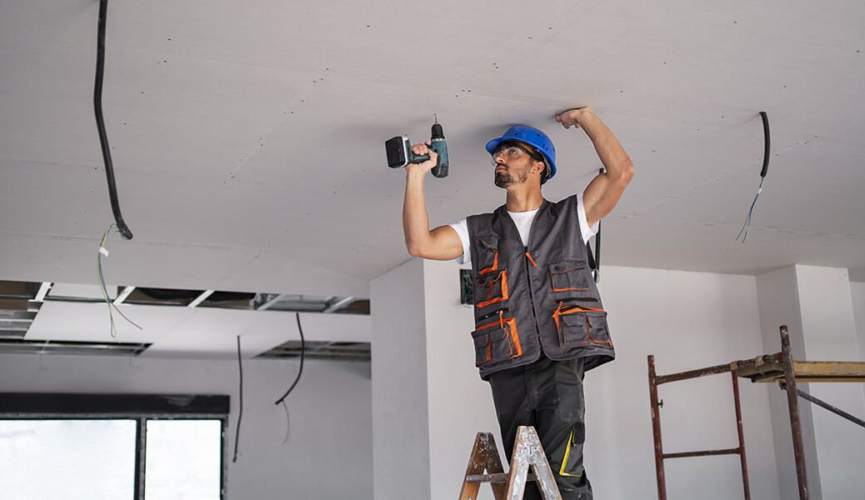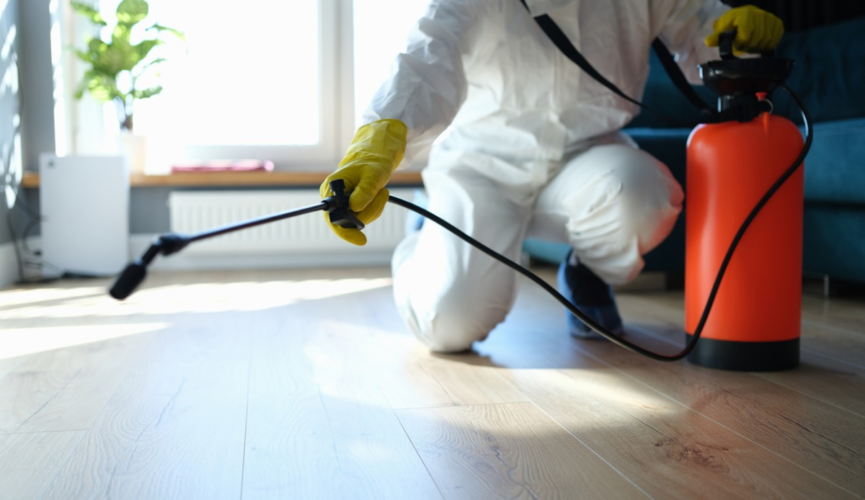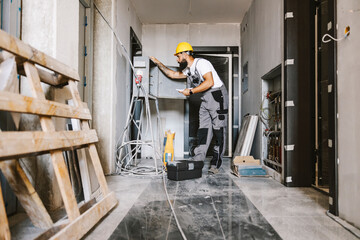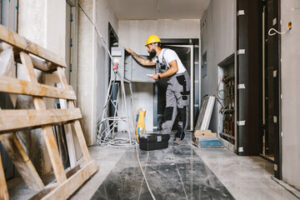Ceilings are essential in defining a space’s appearance and structural integrity. However, they can become damaged due to environmental factors and aging. Ceiling repair and restoration methods help revitalize interiors, creating a refreshed and captivating atmosphere.
Priming and painting are the final touches that complete a meticulous restoration, ensuring the patched area blends seamlessly with the rest of the ceiling. It is important to open windows during these steps to prevent moisture build-up and ensure proper paint adhesion. Click the Ceiling Repairs Perth to learn more.
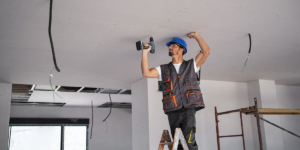
Water damage on the ceiling can be devastating to your home’s structure. If left unaddressed, it can cause mold, rot and a weakening of the house frame over time. A high priority for any homeowner is to find and stop the source of the leak. Water-damaged ceilings must be repaired quickly and correctly to keep occupants safe.
Sagging, discolored or dripping sections of the ceiling are the first indication that something needs to be fixed. If you smell a musty odor, that’s a sign of mold – a very dangerous health issue. Bowing or cracking in the ceiling are also signs of serious structural damage and will require immediate attention by a professional.
Initially, you’ll need to make sure all of the affected drywall and insulation is removed. This is to prevent additional damage from mold or mildew. Next, you’ll need to clean the area and dry it thoroughly before proceeding with repairs. Depending on the extent of the damage, you may need to replace sections of drywall and add wooden cleats behind the repaired areas for support. Then, you’ll need to re-plaster and re-paint.
If the problem is caused by a roof leak, then you’ll need to repair or replace the damaged shingles and flashing. If the damage is due to a plumbing leak, then you’ll need to correct the pipes and any connections that started the leak. Finally, if the problem is caused by condensation, you can often solve it by increasing your home’s ventilation and insulation.
When repairing water damaged ceilings, it is important to use setting-type joint compound rather than regular drywall compound because it dries faster and shrinks less. This ensures that your joints aren’t susceptible to cracking down the line.
A sagging or dripping section of the ceiling can be difficult to find, so it is often easiest to start with the center of the stain or drip and work outwards. This will help you to control the direction of the water and avoid causing more problems in other areas of your home. If you’re unsure how to handle your ceiling repair yourself, ask friends or family for recommendations or hire a professional. They’ll be able to assess the full extent of the damage and provide an estimate per square foot for your repair.
Holes
Whether they’re caused by falling objects or simply by everyday activities, holes in your ceiling can be unsightly and even dangerous. Getting these small issues fixed quickly is critical for maintaining your home’s structural integrity and overall safety.
Larger holes can be a sign of significant structural problems with the ceiling joists or support beams, which may need to be replaced. You may also need to address any water damage, rotting wood, or pest infestations that are contributing to the hole problem.
While some homeowners might be tempted to ignore the damage, most should take prompt action to protect their home from future harm. Fortunately, home repair contractors can help with the process. The first step is to remove any remaining debris in and around the damaged area, which will help prevent further damage and protect the rest of your home’s structure.
Next, a professional will inspect the damaged area to identify any immediate repairs that need to be made. This might include tightening loose fixtures, repairing cracks, or sealing gaps to prevent water infiltration. It’s also important to clean the ceiling surface periodically to remove accumulated dirt and debris, which can contribute to further damage.
Small holes can be repaired using a variety of materials, including caulk, lightweight spackle, or plaster. Choose a product that best suits the type of material your ceiling is made from, and use it to fill in the damage, feathering the edges for a seamless transition. Be sure to apply a sealant that will withstand the elements and provide long-term protection.
Some larger holes in your ceiling may require more advanced techniques. For example, if your ceiling is drywall, you’ll want to first cut a piece of new drywall to fit the hole. Then, you’ll need to adhere the patch to the ceiling using a drywall screw gun and a power drill. Next, you’ll need to add a layer of mesh tape over the seams before applying a coat of setting joint compound and sanding it smooth.
This process can be very messy, so you’ll want to cover any furniture or belongings in the affected area. It’s also a good idea to wear a dust mask and turn off electricity to the work zone, as well as lay drop cloths beneath any ceiling fixtures.
Peeling Paint
A peeling paint eye sore is unsightly, but it can also indicate an underlying problem that needs to be addressed. There are a few common reasons that your paint may be peeling, including high humidity, incompatible paint layers (such as oil-based over latex), or poor surface preparation. Regardless of the cause, there is a process that must be followed to correct the issue.
Start by removing any loose and flaking paint, taking care not to gouge or damage the ceiling surface. Once the damaged areas are free of paint, clean the remaining surface and wipe it down to remove dust, dirt and other debris. You should then sand the area lightly to smooth the surface, using coarse and then fine grit sandpaper until it is smooth enough for repainting. After sanding, it’s best to use a high-quality primer that is compatible with your chosen paint to create a good base for the new coats of paint.
Once the primer has dried, you can then start on the actual repainting. It is important to match the color as close as possible to the original paint that was on your ceiling, if there is still some left. It is also a good idea to repaint the entire ceiling for a uniform look.
If your ceiling is damaged beyond repair, you will need to replace it. This can be a costly job, but it is essential for keeping your home’s value and appearance intact. It is possible to do the work yourself, but it’s always better to hire a professional. This way, you can be sure the job is done properly and will last for years to come. It’s also a much safer option, especially if you have to get up on a ladder to do the work. A professional will know how to safely and effectively fix a ceiling that is damaged beyond repair, and will ensure the new finish looks great as well. This will make your home look new again and add a fresh, inviting feel to the room. In the long run, this will increase your property value and protect your family’s health by preventing mold and other harmful bacteria from growing in the home.
DIY or Professional?
Ceilings are a common area of the home that often experience damage, from small cracks to sagging and water damage. Identifying the problem quickly and accurately can save homeowners time and money on costly repairs.
Whether you have the time to complete the project yourself or are considering a professional quote, it is important to weigh your options carefully. DIY projects can be fun and rewarding, but attempting complex repairs without adequate training or tools could result in serious injury or further damage to the structure of your home.
A sagging or warping ceiling is a clear sign that the materials are beginning to separate from the supports, meaning it is likely to collapse in the near future. This type of damage is not something you can ignore, especially if it occurs in a bedroom where you and your family sleep. If left untreated, it could be fatal.
Water damage is another serious issue that can lead to sagging ceilings, drywall discoloration, and mold growth. Often, moisture can be traced to a broken pipe or leaky roof, so it is important to fix the source of the problem as soon as possible.
If you do choose to tackle a repair project yourself, make sure you are fully equipped with the proper safety equipment, including a harness and ladder. You should also set up adequate lighting and secure your ladder on a stable surface to avoid slipping and falling. It is also important to have a friend or family member on hand to help you with the project, in case of any emergencies.
A professional can be costly, but it is a great option for those who do not have the time to complete a repair on their own or would like to avoid serious injury. Having a professional inspect your ceilings at least once a year can ensure that you are able to spot problems before they become more severe, saving you time and money in the long run.

